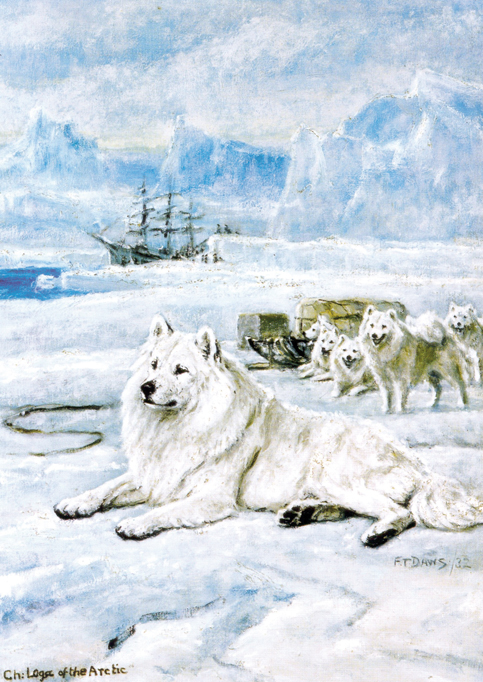
Two days after the summer solstice in 1982, the temperature at the South Pole was minus 117 degrees. When don’t know what the temperature was when the very first human beings set foot on the South Pole, but we know that when those bundled and booted feet made impressions in the snow, right alongside them were paw prints, and they belonged to a Samoyed. It’s even possible that “Etah,” the lead dog for Roald Amundson’s expedition to the South Pole, left the prints when the dog’s team became the first people and canines to walk on South Pole.
At this point, we must pause to mention that while this account of “Etah” appears in many reputable sources, at least one person, George H. Johnson, challenges the claims that “Etah” was a Samoyed based on his being unable to find evidence in Amundsen’s accounts. He writes that all of Amundsen’s dogs were Greenland dogs supplied by the Danish inspector for Northern Greenland, Jens Daugaard-Jensen.
We leave the debate to Samoyed scholars and the passage of time, but if the South Pole account is in doubt, not in dispute is that Amundsen used Samoyeds on his polar expedition to the Arctic Ocean aboard the “Maud” in 1918–1923 because he said as much in a NY Times article, “Amundsen Relates Thrill of Pole Trip; Explorer Tells the Rotarians of Brush With Bear While Strolling on the Ice.” Helen Smith (whom we presume was another researcher) described Amundsen’s account of the trip: “Amundsen’s health mishaps are described, with ’Jacob’, the watchdog of the Maud playing a role in two of them, a broken shoulder and an encounter with a bear.”
Image of Ch. Loga of the Arctic by English artist Frederick Thomas Daws (1932)
